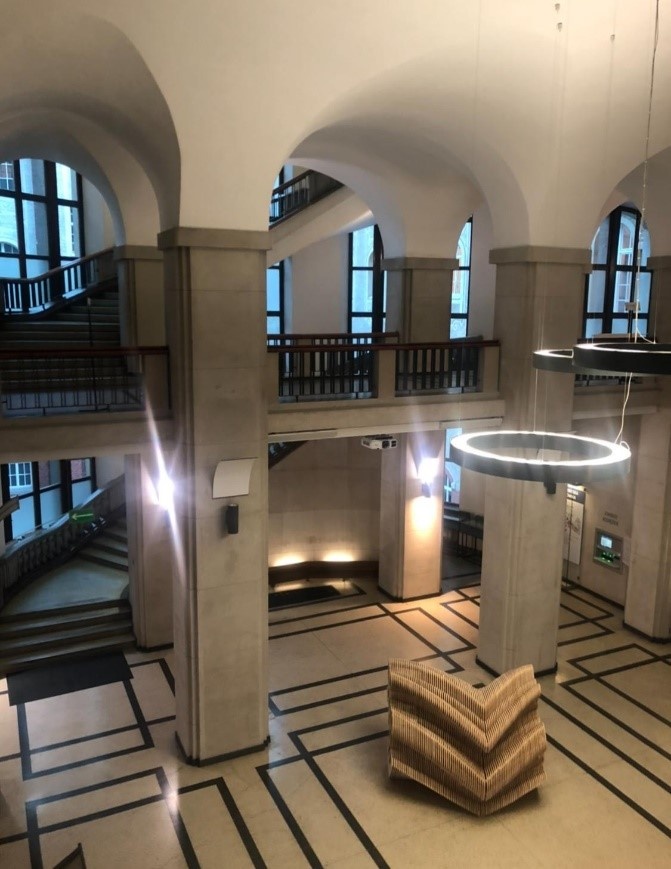POLAND II
One week ago I entered Poland for the first time (Gdańsk). In the following I will describe my first experiences and impressions. In order to order the findings into a coherent contribution, I will use the strategy: "Observe, Represent, Explore, Evaluate". During the "ESN Orientation Week" organized by the university, different activities for the exchange students are offered several times a day. The varied offer includes activities such as bowling, skating, karting and even swimming in the Baltic Sea (in winter). The wide range of activities and the large number of international students have contributed to an intensive week. My personal highlight was the so-called "Apartaton". We went in small groups to three different shared flats, where typical Polish food and drinks were offered. This was a very special moment for me, because as a foreigner you get direct impressions into the private rooms of the local students.
As the program is two weeks long, I will also be doing some activities during the next week. Another positive aspect of the program is that I have already made many friendships with people who are not studying architecture. This is a very good aspect for me, because I usually don't get in contact with other people during the semester.
From this generous programme I conclude that people here attach importance to cohesion. On the one hand, the culture was presented through museum visits and on the other hand an exchange with other cultures is created through joint social activities. The activities are offered attractively, so that regular visits to bars automatically tell about the differences in relation to home.
From the conversations I have had with the locals so far, it is clear that great importance is attached to tradition. They are proud to offer local specialties and they also hold traditional festivals. In the city centre there are numerous shops selling typical Polish food such as ravioli and fish. We visited an event based on typical Polish weddings. Only Polish pop and rock'n'roll music was played, which strongly reminds of some carnival songs. There were also many people singing.
Gdańsk is a very historical city with a history of over a thousand years. Numerous Renaissance buildings attract visitors to the Mariacka. The rich merchants have lived here for a long time. Remarkable are the elevated entrances. These were used to counteract the flood. The alley with the painted facades has been shown in some movies. Today amber (from the surrounding area) is sold there.
There are many places that are used as meeting places for the young people. Some restaurants are open 24 hours a day, and dozens of commercial centers with integrated bowling alleys and gyms offer a full service depending on the interest. There is also plenty to do in the evening. It is noticeable that there are many karaoke bars and that there are bars where you can play. Therefore, interaction is a very important part that contributes to the exchange.
Parralel to the architecture course in Polish, an additional one is offered in English. This is not only used by Erasmus students, but also local people take this opportunity to study in English. I find it very remarkable that the locals have left their comfort zone in order to learn another language and to make international contacts.
The lecturers also attach great importance to intercultural learning. They make sure that the Polish students and the foreign students do the group work together, so that there is also an exchange there. I find this cooperation very good, because friendships are formed in this way. After work you went to a café together or you had dinner together. I look back on this time very positively.
Alexander Meissner, SS20
